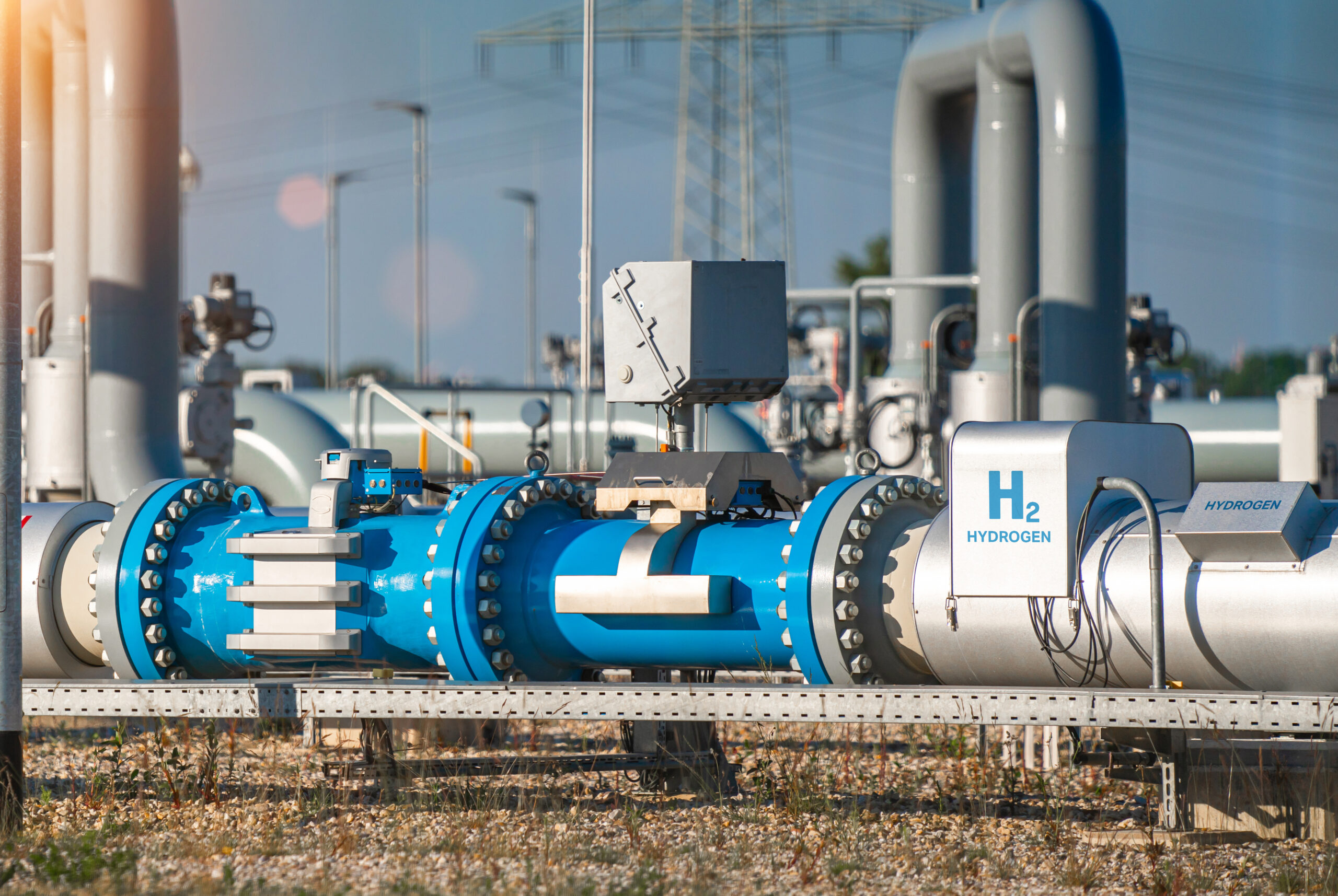America is nearing the completion of its renewable energy infrastructure, but there's one crucial piece still in play. Can you guess what it is? It's not floating wind turbines in New York or photovoltaic systems designed for self-consumption. The answer is hydrogen. Hydrogen could become the keystone of our ecological transition, especially with the approval of the largest hydrogen deployment humanity has ever seen—14 GW of energy across more than 20 states, bringing the power of the future to the nation.
>> RELATED: DOE Announces Over $127 Million to Advance Carbon Capture, Removal, and Conversion Test Centers

The Largest Hydrogen Deployment Ever: 14 GW of Renewable Energy
The America Hydrogen Stream isn't just one project; it's a series of initiatives aimed at building the hydrogen economy in the United States. The primary goal is to make clean hydrogen more accessible and affordable as a source of electricity, industrial decarbonization, and transportation.
At the heart of this effort is the U.S. Department of Energy’s Hydrogen Shot initiative, which aims to significantly reduce the cost of clean hydrogen:
Current goal: Reduce the cost of clean hydrogen to $2 per kilogram by 2026.
Long-term target: Achieve a cost of $1 per kilogram by 2031.
This ambitious project projects an 80% reduction in clean hydrogen costs within a decade. The DOE has been actively funding hydrogen research and development:
Since January, the DOE’s Office of Fossil Energy and Carbon Management (FECM) has allocated more than $122 million for 72 hydrogen-related programs.
In the most recent funding round, 19 proposals from industry and universities received a total of $33.9 million in support.
Billions of Dollars and a Nationwide Effort: How America Will Produce "The New Hydrogen"
The America Hydrogen Stream is advancing through a variety of initiatives and collaborations, covering all aspects of hydrogen production, storage, and utilization. For instance:
A research team led by Chanho Pak from the Gwangju Institute of Science and Technology has developed a new Ir nanostructure catalyst for high-performance PEM water electrolysis.
DNV, a global quality assurance and risk management company, has launched hydrogen blending studies in North America, exploring the potential of mixing hydrogen and natural gas.

>> In Other News: UCF Researcher Develops Lotus-inspired Tech to Convert CO2 to Fuels, Chemicals
The Most Extensive Participation in an Energy Project: Hydrogen Stream in Detail
Several states are taking the lead in developing hydrogen infrastructure:
West Virginia: Fidelis New Energy is considering The Mountaineer GigaSystem for lifecycle carbon-neutral hydrogen production in Mason County.
Florida: Florida Power & Light is working on a 20 MW green hydrogen plant.
California and New Jersey: Both states have various hydrogen projects in the pipeline, including hydrogen blending for natural gas pipelines.
Companies across the U.S. are also investing heavily in hydrogen projects:
Wärtsilä is currently working on a liquefied synthetic methane plant in Finland, which could serve as a model for U.S. projects.
Dominion Energy and Duke Energy are exploring opportunities in hydrogen blending and power generation.
Expanding Participation: More States Join the Hydrogen Stream
Several other states are actively getting involved in hydrogen projects:
California: SoCalGas and SDG&E have proposed a plan to blend 20% hydrogen into natural gas pipelines.
New York: NRG has plans to repower the Astoria peaker power plant to run solely on electricity and hydrogen by 2040.
Ohio: New Fortress Energy is constructing a 485 MW plant that will initially use a mix of 15-20% hydrogen and natural gas.
North Carolina: Dominion Energy is seeking approval to add 5% hydrogen to natural gas in a pilot program.
The America Hydrogen Stream could revolutionize the energy landscape, but its impact could extend even further. The future of sustainable mobility depends on a widespread and accessible network of refueling stations, which this project could help realize. Could this mark the beginning of a shift from electric vehicles (EVs) to fuel cell electric vehicles (FCEVs)? Only time will tell, but experts agree that replacing gas and fossil fuels remains a top priority, just as we’re seeing in Europe and other parts of the Global North.
Subscribe to the newsletter
Daily decarbonization data and news delivered to your inbox
Follow the money flow of climate, technology, and energy investments to uncover new opportunities and jobs.
Latest issues
-
Air Liquide Just Solved Hydrogen’s Hardest Problem
Inside This Issue ⚗️ Air Liquide's Ammonia Cracker Unlocks Hydrogen Trade 🤝 BASF and ExxonMobil Join Forces to Advance Low - Emission Hydrogen Through Methane Pyrolysis Technology 🔥 Haffner Energy...
-
Texas Bypasses EPA, Unlocks Billion-Dollar CCS Rush
Inside This Issue ⛽ Texas Bypasses EPA, Unlocks Billion-Dollar CCS Rush 🏭 Proposed Blue Ammonia Plant In Ingleside Moves Forward After Heated Debate 💡 Hydrogen Could Be The Secret To Unlimited Ene...
-
Spiritus Targets $100 Per Ton Carbon Capture Breakthrough
Inside This Issue 🌍 Spiritus Targets $100 Per Ton Carbon Capture Breakthrough 🌡️ Removing CO2 From Atmosphere Vital To Avoid Catastrophic Tipping Points, Leading Scientist Says 🛫 DG Fuels Appoints...
Company Announcements
-
Peaks Renewables Partners With Biogas Development to Expand Idaho Production
Peaks Renewables has teamed up with Biogas Development to enhance renewable gas production at the Hidden Hollow Energy Landfill Gas Project in Boise, Idaho. Peaks is making a preferred equity inve...
-
Funding led by Azolla Ventures with Chevron Technology Ventures and Freeflow Ventures positions Erg Bio to advance its cost-competitive bioindustrial platform as the U.S. prioritizes energy securit...
-
Plug Power Hosts Seventh Annual Symposium Highlighting Hydrogen’s Role in Energy Independence
SLINGERLANDS, N.Y., Nov. 18, 2025 (Globe Newswire) — Plug Power Inc. (NASDAQ: PLUG), a global leader in hydrogen solutions for the hydrogen economy, is hosting its seventh annual Plug Power Symposi...
-
NEWPORT BEACH, Calif. & OXNARD, Calif. (Business Wire) — Clean Energy Fuels Corp. (Nasdaq: CLNE) announced that it was awarded a contract to design and build a new hydrogen fueling station for ...